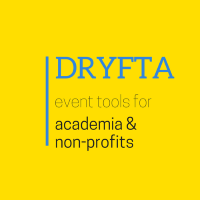
In the world of academia, conferences issue a call to researchers far and wide to submit their papers on their research and findings to be shared to their attendees. But, if it’s your first time doing so, it could get a little out of hand, considering that you’ll be receiving papers from every nook and cranny of the world. Here are a couple of tips to help you along the way.
☑ #1 Make it Focused
Before you get excited about getting a response from academic from all over the world, you need to make sure that you’re crystal clear about the types of topics these papers should be about. Your conference will have a theme of its own or its own specific topic, so it only makes sense that you call for papers that are relevant to what you will be needing for your current conference. Besides that, you’ll need to outline the requirements of the submission as well, to make sure no confusions arise.
☑ #2 Direct Mail Still Works
Sending a direct email is still one of the best ways to reach out to your prospective conference speakers and presenters, and it’s much more convenient for them if you attach a link to your submission site as well. Plus, sending a call via direct email seems much more professional and it sends an indirect message that you’re serious about getting them to submit their latest papers and research.
☑ #3 Social Media is Your Friend
If you’re looking to have more of the younger generation of academicians submit their papers, go onto social media and start a specific hashtag for your call of papers. Be sure to have a proper post that outlines the theme or topic of your conference, the requirements of the submission as well as the deadline. You can also go ahead and place the link to your submission site on your social media profile for easy access.
☑ #4 Make Use of Events
When you organize events for a current conference, be sure to use those footfalls as leverage for your next conference. Hand out flyers with details for your next submission site, complete with the theme of your conference and contact person. This would give your prospective speakers a heads up and they’d be able to get their papers in order, in time for your next call for papers.
☑ #5 Maximize Your Website Real Estate
If you’re a seasoned organizer of such academic conferences, you can be sure that there would be constant traffic to your site on a daily basis. Use up the empty spaces on your website to add a banner or a pop-up that directs your visitors to your call for papers submission site.
☑ #6 Get Online Directories on Your Side
When launching a call for papers, your main goal is to reach the highest number of relevant people, and what better way to do that then to advertise your call for paper on a specialized directory? Sites like WikiCFP.com, PapersInvited.com, Eventstopten.com and ConferenceAlerts.com are just the directories that you would want to list your call for papers on so that you can maximize your reach out.
☑ #7 Seek Help From a Famous Face
Lots of people tend to react positively when they see a famous face being involved in something. You can get in touch with a renowned speaker in the industry that is related to the theme of your conference and get them to help you advertise your call for papers on their social media channels and even on their website, all at a small fee or just by inviting them as the main speaker at your conference. Having a famous face associated with your conference makes it seem more legitimate and will quickly pique the interest of your potential paper submitters.
☑ #8 Use a Submission Platform
The last thing you need is an email inbox packed to the brim with tons and tons of research papers coming in from every direction. In order to easily and properly manage all the submissions that you’ll be having, you can always use an abstract management system like, for instance, Dryfta, to keep all your submissions in order.
☑ #9 Set Up a Submission Checklist
There may be lots of new researchers with some groundbreaking work, but this may be their first time at something like this. It would be helpful for both them and yourself if you create a simple checklist on your submission site that outlines the items that you’ll need for a call submission. Not only that, on some sites, you can actually filter for submissions that have ticked off every check on the checklist, so you won’t need to sift through all the submissions.
☑ #10 Shortlist your Favorites
While you look through piles and piles of submissions, many may catch your eye. But, since most of them are more likely to be digital copies or submissions, you can’t just set them aside. The best way to go about this is to have a spreadsheet of names and topics that you find interesting and attach a link to their particular paper. When it’s time to finalize, you can come back to this and decide which ones will make the cut. Alternatively, shortlisting your favorites into a specific Google Drive folder works as well.
Launching a call for paper can be quite some work, but it’s by no means impossible. Use every relevant communication channel that you can get your hands on in order to make sure that your call for papers is seen and heard far and wide. Aside from that, you’ll need to remember that you’ll be dealing with thousands and thousands submissions so it’s crucial to sort them through as soon as possible.
Hopefully these few tips and tricks made your work as a conference organizer a lot easier. Good luck with your paper submissions!





